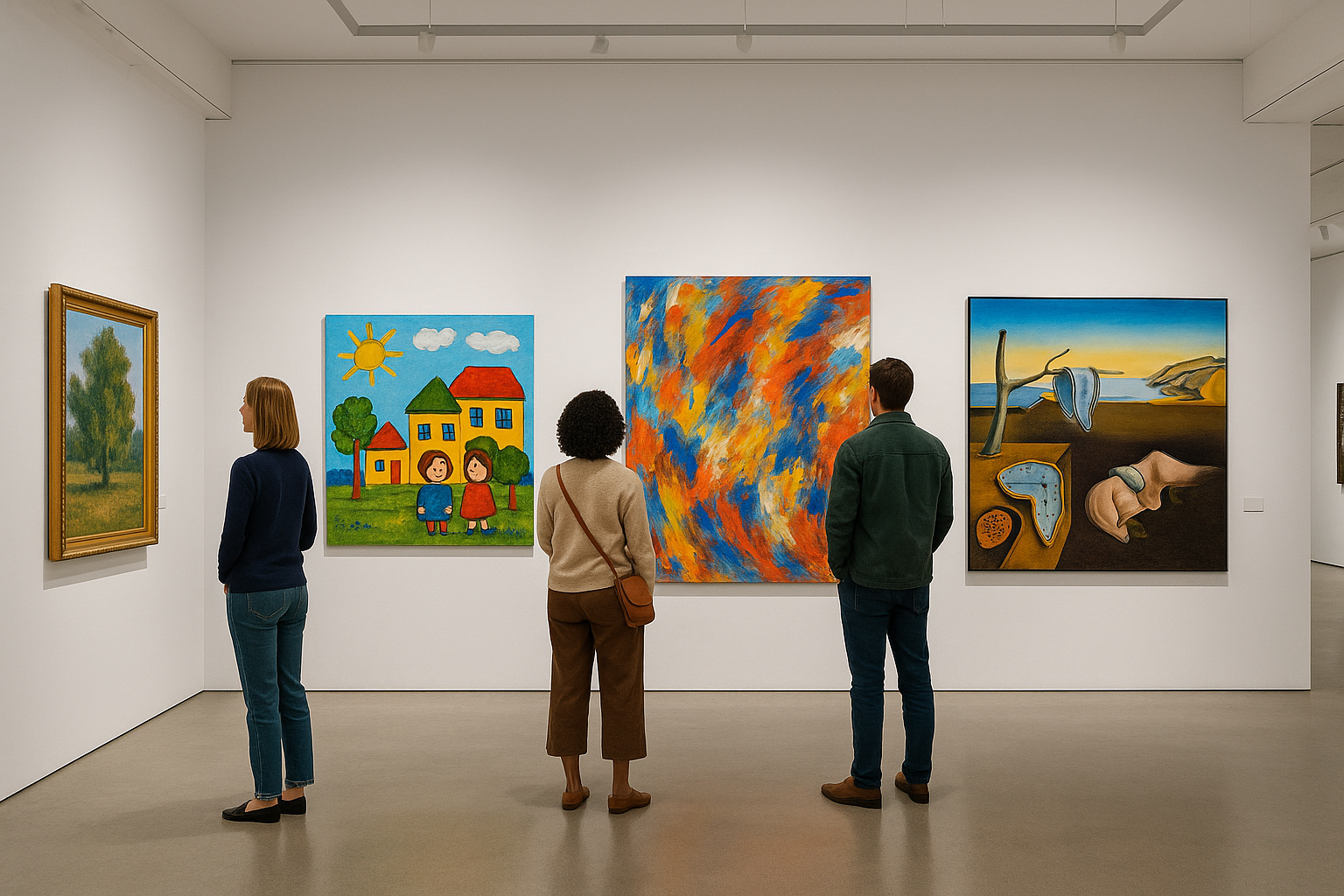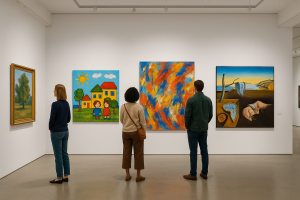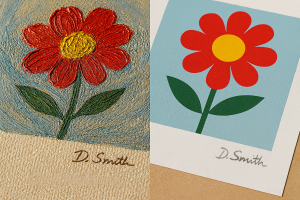The world of art is rich and diverse, and among the many works found in galleries, exhibitions, and online art marketplaces, there are countless unique styles. Understanding basic art terms can help you choose the perfect piece for your home or office – and give you more confidence in your purchase. This guide explores the leading art styles – from naive art to abstract – with simple explanations and examples.
🎨 Figurative Art
Figurative art depicts reality as it appears – people, landscapes, objects, animals, and more. You can easily understand what is portrayed without complex interpretation. This style can be realistic and precise or more free and personal, but it always draws inspiration from the real world.
Examples: Portrait paintings, landscape art, still life.
🎨 Naive Art
A colorful, flat, and charmingly simple style with childlike proportions. Naive art does not aim for perfect perspective or anatomical accuracy; instead, it presents a direct and sincere view of the world.
Examples: Vibrant village scenes, everyday life depictions, round cheerful figures.
🎨 Abstract Art
Abstract art does not attempt to represent reality but instead expresses emotions and ideas through color, shape, and line. Sometimes it is completely non-representational, and other times it retains subtle hints of recognizable forms.
Examples: Color splashes, geometric shapes, emotional compositions.
🎨 Surrealism
A style that blends reality with dreamlike elements, where figures and objects appear in illogical ways. Surrealism sparks curiosity and often a sense of wonder.
Examples: Melting clocks, imaginary creatures, unusual object combinations.
🎨 Modern Art vs. Contemporary Art
Modern art refers to a historical period (late 19th century to the 1970s) when artists broke away from traditional rules.
Contemporary art includes works created today, in a variety of styles, materials, and techniques.
Conclusion:
Leading art styles – from naive art to abstract – offer a vast world of possibilities. Some people are drawn to precise realism, while others prefer the freedom of abstract expression. The most important tip is to choose a piece that moves you emotionally; if it touches you, it will likely resonate with others as well. Such a choice will make the artwork a meaningful part of your surroundings, add daily inspiration, and accompany you for years to come.





